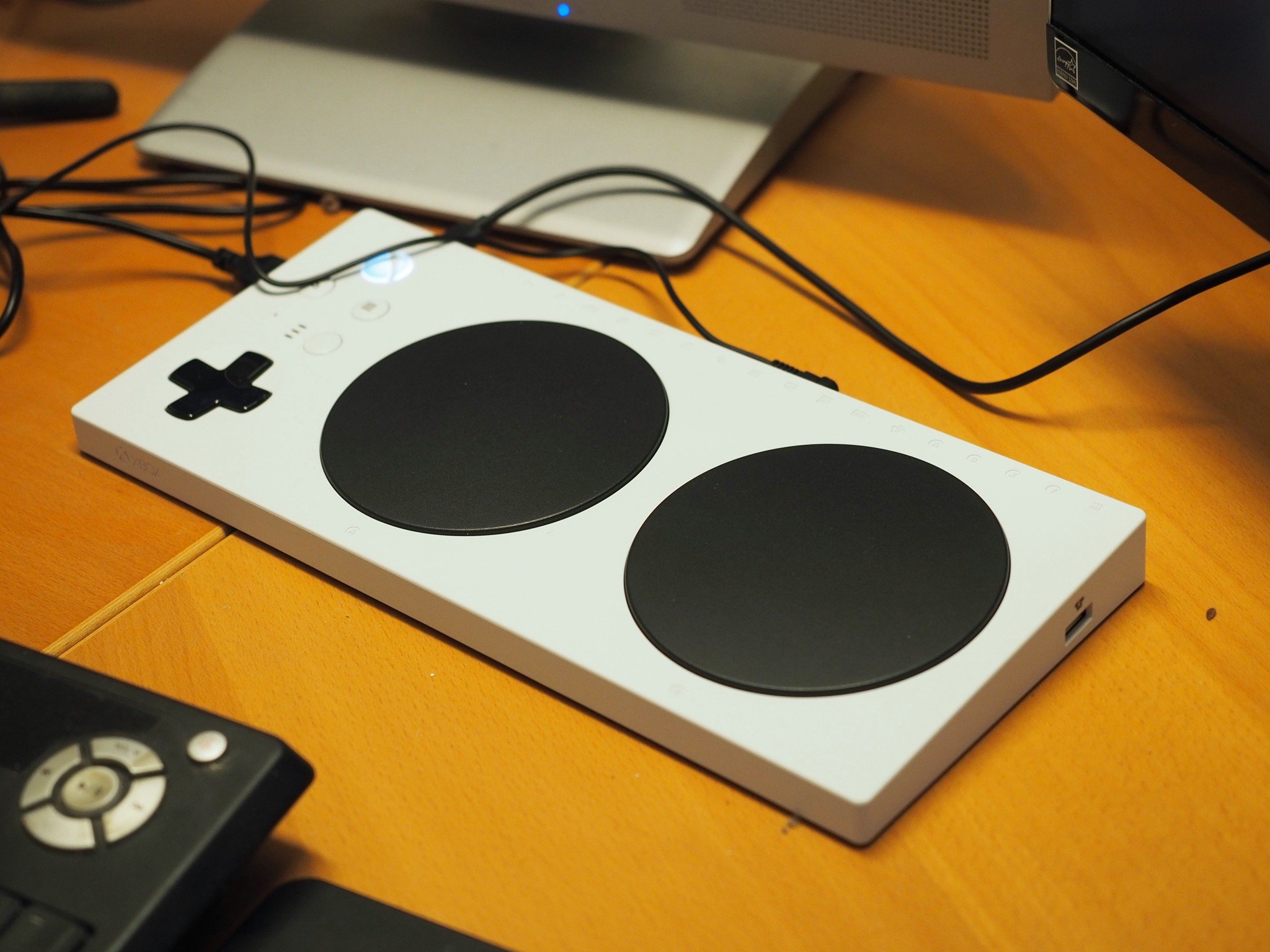 Source: Windows Central
Source: Windows Central
Video games allow people of all kinds to experience incredible creations, connect with people all over the world, and be a part of countless stories in a way you can’t with other mediums. However, something that has always been an obstacle for a significant portion of the gaming community is accessibility. While accessibility in gaming is becoming increasingly important, many developers and teams struggle to make their inclusivity ambitions a reality.
How can these developers ensure their games are accessible to as many players as possible without detracting from the experiences they’ve built? Microsoft has invested heavily in answering this question. Microsoft’s efforts in this space have made Xbox the leader in gaming accessibility, and Microsoft wants everyone to follow in its footsteps.
I got an opportunity to speak with Senior Gaming Accessibility Program Manager at Microsoft Brannon Zahand to learn more about what Xbox has accomplished with accessibility in gaming, how developers can learn from Microsoft, and how members of the gaming and disability community can participate in making gaming more inclusive for everyone.
Giving everyone a chance to play
 Source: Windows Central
Source: Windows Central
Creating an accessible video game means designing it to be inclusive of everyone and the way they play. Accessibility settings in games should cater to temporary and permanent disabilities, whether physical or mental.
Making games more accessible has been a big focus in recent years, and this movement continues to grow. Microsoft, especially, has been a powerful voice pushing accessibility further and has gone above and beyond ensuring Xbox Game Studios titles include a plethora of accessibility settings, like with Gears Tactics’ menu narrator or the arachnophobia accessibility setting in Grounded.
In 2018, Microsoft unveiled the Xbox Adaptive Controller (XAC), a unique controller that allows players to customize their setups with standardized accessories, a massive community of support and solutions, and countless other options. While other adaptive controllers like this exist, the XAC is widely available and is backed by a significant company, its resources, and a dedicated community. The XAC is a fantastic controller and one of the best controllers for Xbox Series X|S for anyone who can benefit from it.
Microsoft has been a powerful voice pushing accessibility in gaming further than ever
When our own Jez Corden wanted to learn more about the XAC, he teamed up with his friend Oliver Koerber, a Gaming & Disability Community member, to review the Xbox Adaptive Controller. After setting up the XAC and using it to play games previously unavailable to him, Oliver said, “I’ve never had a controller that worked for me. I can look forward to more types of games now and can dive more into the console world… It’s a really great thing.”
Unfortunately, accessibility doesn’t always sit in the foreground for game companies. Sony, Nintendo, and other game companies can certainly make concessions in their games in the name of inclusivity (The Last of Us Part II from Sony and Naughty Dog, for example, includes a wonderful number of in-depth accessibility settings). Still, these efforts aren’t always obvious or consistent. Simultaneously, these companies don’t have the same dedication to making accessibility better that Microsoft has shown.
A good example of this is how Microsoft is one of the few companies to provide closed captioning for presentations, like at GDC. Closed captioning is one of the smaller details that large companies can often overlook but is hugely appreciated by all manner of viewers.
Making games accessible on a per-game basis is still great to see, and things have been steadily improving over the last few years from many game companies. Microsoft, though, has several tools that start with the developers to begin fostering an accessibility-first mindset in game development. This movement wants to make accessibility, well, accessible for developers that might not know where to begin.
It starts with the developers
 Source: Xbox
Source: Xbox
While developing and supporting solutions to enable players to experience games that may not have been built with them in mind is terrific, it doesn’t resolve the deeper obstacle that prevents all video games from being as accessible as possible. The Xbox Adaptive Controller is a valuable tool for disabled gamers to use, but taking accessibility in gaming to the next level means starting with developers and how they build their games. Microsoft knows this, and in early 2020 released the Xbox Accessibility Guidelines (XAGs).
This is a series of guidances and advice for developers to follow to ensure their game could reach as many people as possible without affecting the game at its core. While this initial system was a great first step, Microsoft hasn’t stopped there.
Taking feedback from developers and the Gaming & Disability Community, Microsoft massively updated the Xbox Accessibility Guidelines with implementation examples, additional information, clearer language, scoping questions, and additional links to resources, non-profit organizations, and industry experts.
Even then, Microsoft wasn’t going to stop innovating and announced a brand-new service for developers alongside these guideline updates. “We realized that we could do more,” Zahand said. “For a while now, developers and publishers had expressed interest in our Gaming Accessibility Team reviewing their products to provide feedback on their accessibility. So, it made sense to create a program that would provide a simple and straightforward way for us to do just that, using the information we’ve learned on our own game accessibility journey.”
Devs can have their games tested by Microsoft and members of the Gaming & Disability Community
Not only can developers use Microsoft’s educational guidelines when creating their games, but now developers can take advantage of Microsoft’s in-house Gaming Accessibility Team to test their projects against the XAGs. All developers have to do is submit their builds, and Xbox will issue a report.
The new Game Accessibility Testing Service is a fantastic resource for developers to use, but Microsoft knows it alone doesn’t possess enough knowledge and insight to do it all effectively. That’s why the newly-created program includes members of the Gaming & Disability Community. These valuable participants test games against the XAGs and provide their insightful feedback on areas of improvement for developers.
“The fact that we have gamers with disabilities… is something we know is incredibly valuable, especially for smaller developers,” Zahand said about the Game Accessibility Testing Service. “We’ve been told by some developers that they just aren’t sure how to include the community as part of their development process. Not only does this service provide that opportunity, but we also provide information with every report that includes resources with tips on how to reach out to the Gaming & Disability Community.”
 Source: Windows Central
Source: Windows Central
“If you are taking an inclusive approach to design… accessibility will be a natural byproduct”
On developing with accessibility in mind, Zahand said, “If you are taking an inclusive approach to design from day one of development, accessibility will be a natural byproduct, not to mention an overall better experience for all of your customers. You won’t be spending time and resources scrambling towards the end of development trying to slap on accessibility features.”
“That’s why the Gaming Accessibility Team and Xbox are focusing so much on developer education,” he continued. “The sooner teams begin developing inclusively, the easier and cheaper it will be.”
Of course, Microsoft is also encouraging Xbox Game Studios to take advantage of the XAGs and Game Accessibility Testing Service. Xbox Game Studios have been an integral part of bringing these projects and ambitions to life by providing first-hand experience and feedback to Microsoft.
All of this shows accessibility and inclusivity are core pillars of gaming at Microsoft. Meaningful investments in developer education and end-user tools are good for everyone in gaming, whether you consider yourself a member of the disability community or not. Every gaming company and developer should strive to improve their own efforts continually. Gaming is always better when we can all play together.
Getting the community involved
It’s clear that accessibility in gaming is a priority for Microsoft, and every company involved in gaming should look to the Xbox Accessibility Guidelines and Game Accessibility Testing Service for inspiration and guidance on pushing accessibility in gaming further. Microsoft knows they can’t accomplish this alone, though, and strives to involve the Gaming & Disability Community every step of the way.
If you believe you can contribute to Microsoft’s efforts in game accessibility, there are ways you can reach out.
Feedback can be sent to xaccess@microsoft.com. Also, individuals who reside in the greater Seattle area, are experienced using assistive technology in gaming, and are interested in being a part of the Microsoft Game Accessibility Testing Service can e-mail gamea11ytesterinfo@microsoft.com for more information.
We may earn a commission for purchases using our links. Learn more.

Behold the new Razer Kiyo Pro full HD webcam with STARVIS technology
Move over, Logitech, as Razer is getting in on the premium full HD webcam market. The new Kiyo Pro features a low-light STARVIS CMOS sensor, 1080P at 60 FPS, HDR, and a very flexible mount for your PC or tripod. It goes on sale today for $199, and here is why it could be killer for the office or streaming on Twitch.

Everything we know about Windows 10’s big Sun Valley update so far
Microsoft is currently working on a major update for Windows 10 that is expected to debut later this year that will bring with it a refreshed design and new features that are supposed to enhance the users’ workflow in 2021 and beyond. This will be the biggest update to Windows 10 since Microsoft left the OS to stagnate on the market. Microsoft wants to reinvigorate the desktop, and Sun…

These are the best gaming mice for folks with large hands
A great gaming mouse is important for anyone looking to get into PC gaming. However, if you have large hands, you may struggle to find a mouse that feels comfortable for you. Thankfully, there are plenty of plus-sized mouse options on the market.




